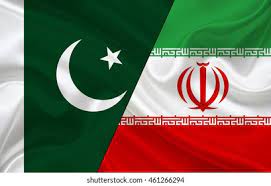The Pakistan Stock Exchange (PSX) witnessed a bearish trend at the start of trading, with the benchmark KSE-100 index falling by 534 points, signaling investor concerns amid mixed economic signals. Simultaneously, the Pakistani rupee registered a slight gain against the US dollar, with the greenback becoming cheaper by 20 paisas in the interbank market, reflecting cautious optimism on the currency front.
Stock Market Performance: A Sharp Dip in KSE-100 Index
At the opening bell, trading at the Pakistan Stock Exchange began on a negative note, with the KSE-100 index dropping by 534 points, settling at 121,539 points. This drop follows a similarly sluggish performance in the previous trading session, where the index had already declined by 254 points, closing at 121,971.
The recent dip indicates growing investor uncertainty and a cautious approach toward equity investments, largely driven by macroeconomic indicators, fiscal challenges, and ongoing negotiations between Pakistan and the International Monetary Fund (IMF).
Market Volatility and Trading Activity Overview
In terms of trading activity, the market remained volatile throughout the previous session, with the index moving within a wide band of 1,076 points, signaling significant fluctuation in investor sentiment. A total of 1.15 billion shares were traded across the market with a cumulative value of approximately Rs 27.98 billion.
This high volume indicates active participation but also reflects short-term trading strategies being adopted by investors amid market uncertainty. Analysts suggest that such volatility could continue in the near term unless clarity emerges on fiscal consolidation, interest rate decisions, and external financing inflows.
Dollar Becomes Cheaper in Interbank Market
In a related development on the currency front, the Pakistani rupee appreciated slightly against the US dollar. According to the Exchange Companies Association of Pakistan (ECAP), the dollar fell by 20 paisas in the interbank market, and was being traded at Rs 283.21 during morning trading.
This minor strengthening of the rupee could be attributed to improved foreign currency inflows, possibly from remittances, exports, or loan disbursements, including anticipation of IMF tranche approval.
The gradual recovery of the rupee—despite external debt repayments and import pressures—signals cautious optimism in the financial market, particularly as the State Bank of Pakistan (SBP) continues to manage exchange rate volatility through its regulatory tools.
Factors Behind Bearish Sentiment at the Pakistan Stock Exchange
Several key factors have contributed to the bearish sentiment at the PSX:
1. Delay in IMF Agreement
Pakistan is currently engaged in discussions for a new loan program with the IMF. Delays or uncertainty in reaching a finalized agreement often undermine investor confidence, as the IMF deal is closely tied to macroeconomic stability and fiscal support.
2. Fiscal Budget Concerns
With the 2025 national budget recently presented, investors are evaluating its implications on taxation, development spending, and corporate earnings. The potential increased tax burden on industries has caused hesitation among investors in key sectors such as cement, fertilizer, and textiles.
3. Interest Rate Speculation
Speculation continues about the State Bank of Pakistan’s next monetary policy move. With inflation figures slightly cooling, some investors expect a possible interest rate cut, while others believe that high rates may continue due to structural weaknesses. This uncertainty has also affected trading behavior.
4. Global Economic Factors
The global markets are also facing uncertainty due to interest rate decisions by the US Federal Reserve, oil price fluctuations, and ongoing geopolitical conflicts including the situation in the Middle East. These external shocks often trickle down to impact sentiment in emerging markets like Pakistan.
Sector-Wise Performance at the PSX
A breakdown of the market shows that several key sectors were under pressure, contributing to the downward trend in the KSE-100 index:
- Banking Sector: Declined amid uncertainty over future interest rate policies.
- Cement Sector: Weakened due to concerns over the impact of new federal excise duties announced in the budget.
- Oil and Gas: Traded mixed as global crude prices remained volatile.
- Technology Stocks: Experienced profit-taking after previous gains, leading to a modest pullback.
Analysts noted that investor behavior was predominantly driven by short-term trading strategies rather than long-term investments.
Investor Sentiment and Market Outlook
Investor sentiment continues to be mixed but cautious, as they weigh the potential risks and opportunities in the near term. The negative trend in the stock market, coupled with the mild improvement in the currency, reflects a complex economic environment where progress on one front is not necessarily mirrored by other indicators.
Many investors are looking ahead to the outcome of IMF negotiations, potential foreign direct investment (FDI) inflows, and government reforms to gauge the future direction of the market.
Financial analysts suggest that the market could recover if:
- A comprehensive IMF deal is announced.
- There is clarity on tax reforms and incentives for industries.
- Inflation continues to decline, allowing the central bank to consider rate cuts.
- Political stability is maintained, encouraging investor confidence.
Role of the State Bank and Government Policy
The State Bank of Pakistan (SBP) plays a critical role in maintaining currency stability and inflation control. With minor appreciation of the rupee today, it appears that SBP’s efforts to curb volatility are yielding results. However, the real test lies in ensuring external financing needs are met without draining foreign exchange reserves.
Meanwhile, the federal government’s policy direction, especially with respect to fiscal discipline, tax collection, and development spending, will determine the broader market trajectory in the coming weeks.
Conclusion: Mixed Signals, But Cautious Hope
Today’s performance in both the stock market and currency market sends mixed signals about Pakistan’s short-term economic outlook. The decline in the KSE-100 index points to investor concerns, while the strengthening of the rupee offers a glimmer of hope in terms of external sector resilience.
As Pakistan navigates a complex economic landscape with high inflation, external debt obligations, and structural challenges, all eyes are on the IMF program, budget implementation, and monetary policy direction.
In the coming days, investors and analysts alike will be watching key developments closely to better understand the direction of Pakistan’s financial markets.

























